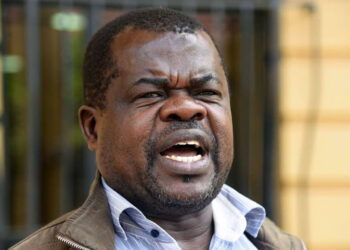On this Groundhog Day, February 2, 2025, Punxsutawney Phil, the famous weather-predicting groundhog from Pennsylvania, emerged from his burrow to see his shadow, signalling six more weeks of winter.
This prediction was made amidst a substantial crowd at Gobbler’s Knob, where thousands gathered to witness the tradition that has been in place since 1887.
Despite the ceremonial pomp, including fireworks and live music, the clear skies meant Phil saw his shadow, much to the chagrin of those hoping for an early spring.
Groundhog Day history
Groundhog Day has its roots in the ancient Celtic festival of Imbolc, which marked the beginning of spring. German immigrants brought a similar tradition to Pennsylvania, where they adopted the European custom of Candlemas Day.
In Europe, if a hedgehog or badger saw its shadow on Candlemas Day, it was said to predict more winter. In Pennsylvania, due to the absence of these animals, the groundhog was substituted.
The tradition was formalised in Punxsutawney, Pennsylvania, where the first official Groundhog Day celebration took place on February 2, 1887, organised by the Punxsutawney Groundhog Club.
They named their groundhog “Punxsutawney Phil,” who supposedly has been making predictions ever since, with claims of Phil being immortal.
The belief is that if Phil sees his shadow, there will be six more weeks of winter; if he doesn’t, spring will come early. This folklore has little scientific backing, but it remains a beloved cultural tradition.
Over time, Groundhog Day has become a widely celebrated event across the United States, with other groundhogs like Staten Island Chuck and General Beauregard Lee making their predictions in their locales.
The 1993 comedy film “Groundhog Day,” starring Bill Murray, significantly boosted the event’s profile, introducing the concept of reliving the same day repeatedly to a broader audience.
This film has since made the phrase “Groundhog Day” synonymous with repetitive, mundane experiences.
Each year, thousands gather in Punxsutawney to witness Phil’s prediction, which includes festivities like live music, food, and storytelling. The event is covered by media outlets, both local and international, turning it into a cultural phenomenon.
Other regions in North America have their versions of this tradition with different animals, like the marmot in Canada or even a stuffed groundhog in some places for humour.
While many celebrate the fun and folklore, some sceptics view it as an exercise in superstition with no real predictive power.
Some animal rights activists have criticised the use of live groundhogs, leading to debates about the ethics of such events.
Groundhog Day serves as a reminder of folk traditions in an increasingly scientific world, blending community, humour, and a touch of hope for milder weather, encapsulating the human desire to predict or control nature’s whims.
Despite its lack of meteorological accuracy, it remains a cherished part of American culture, marking the midpoint between the winter solstice and spring equinox.















